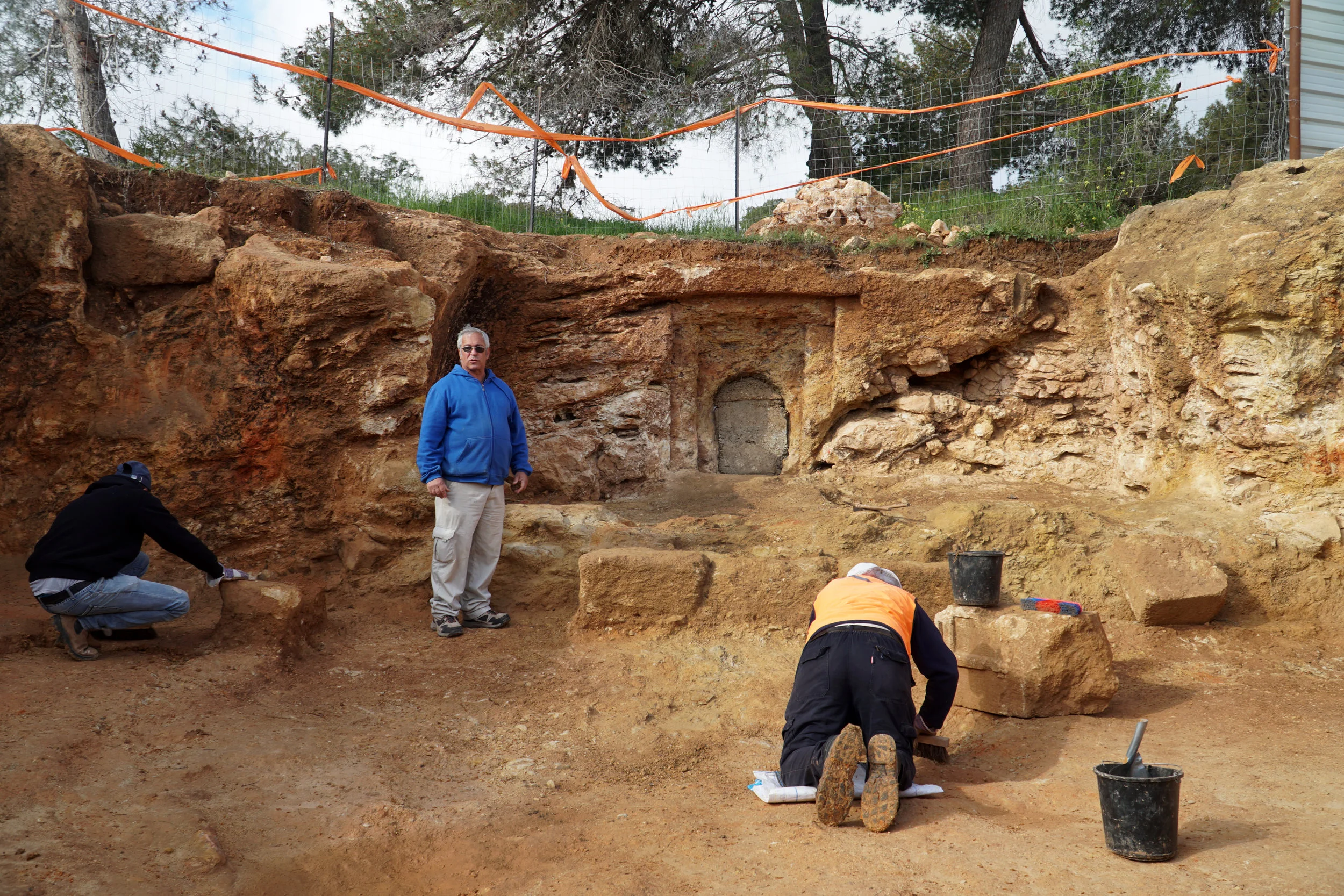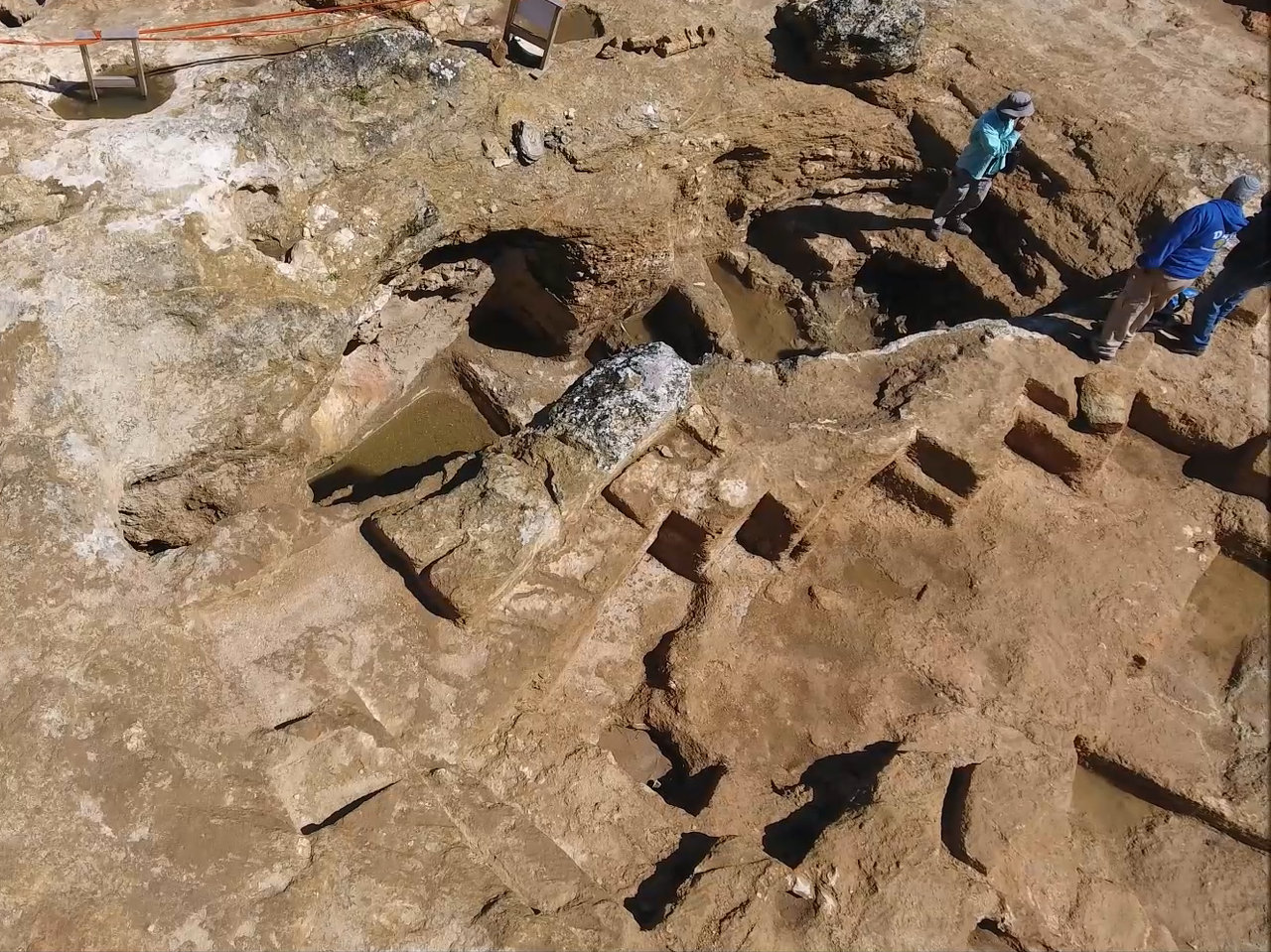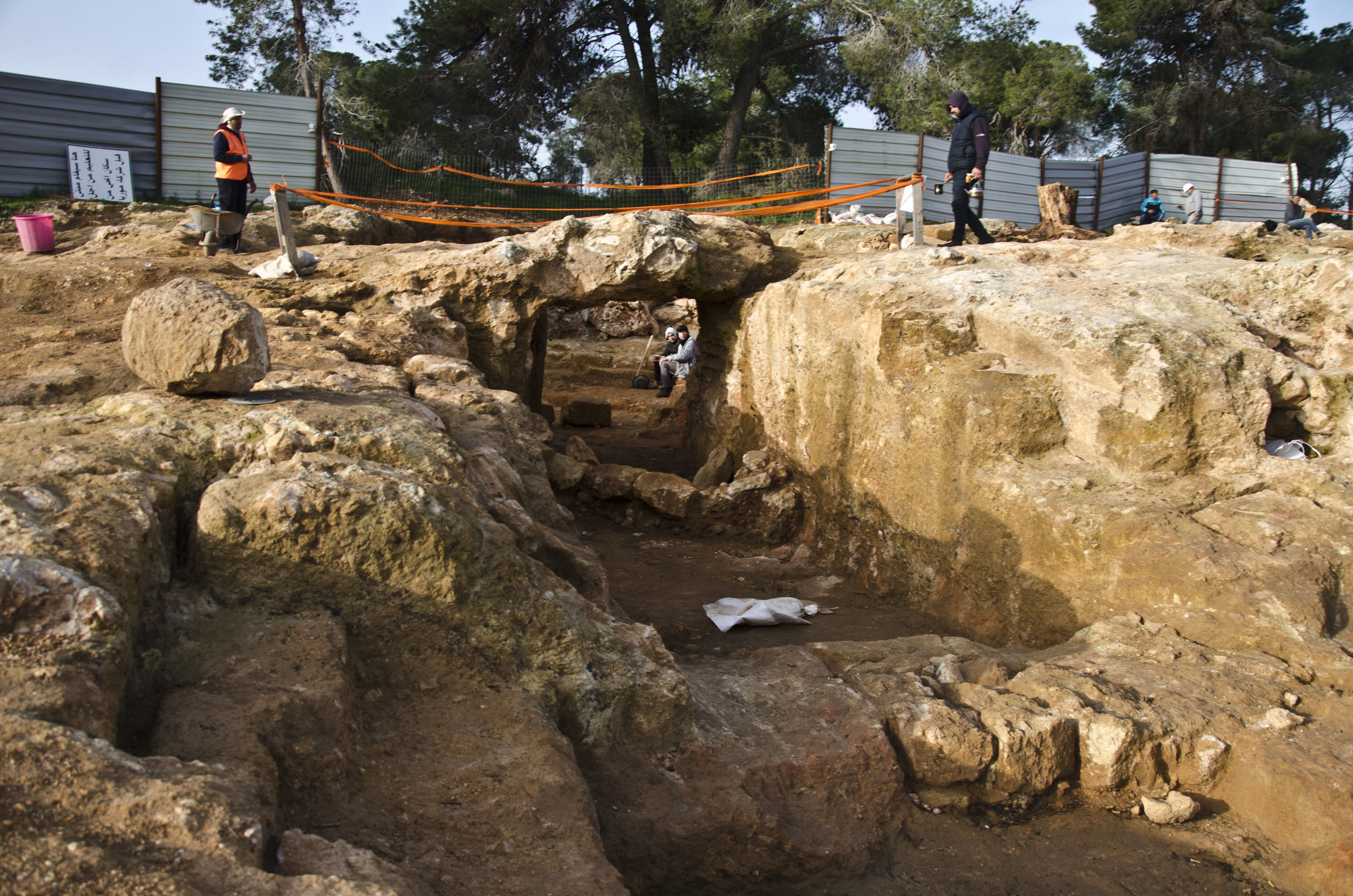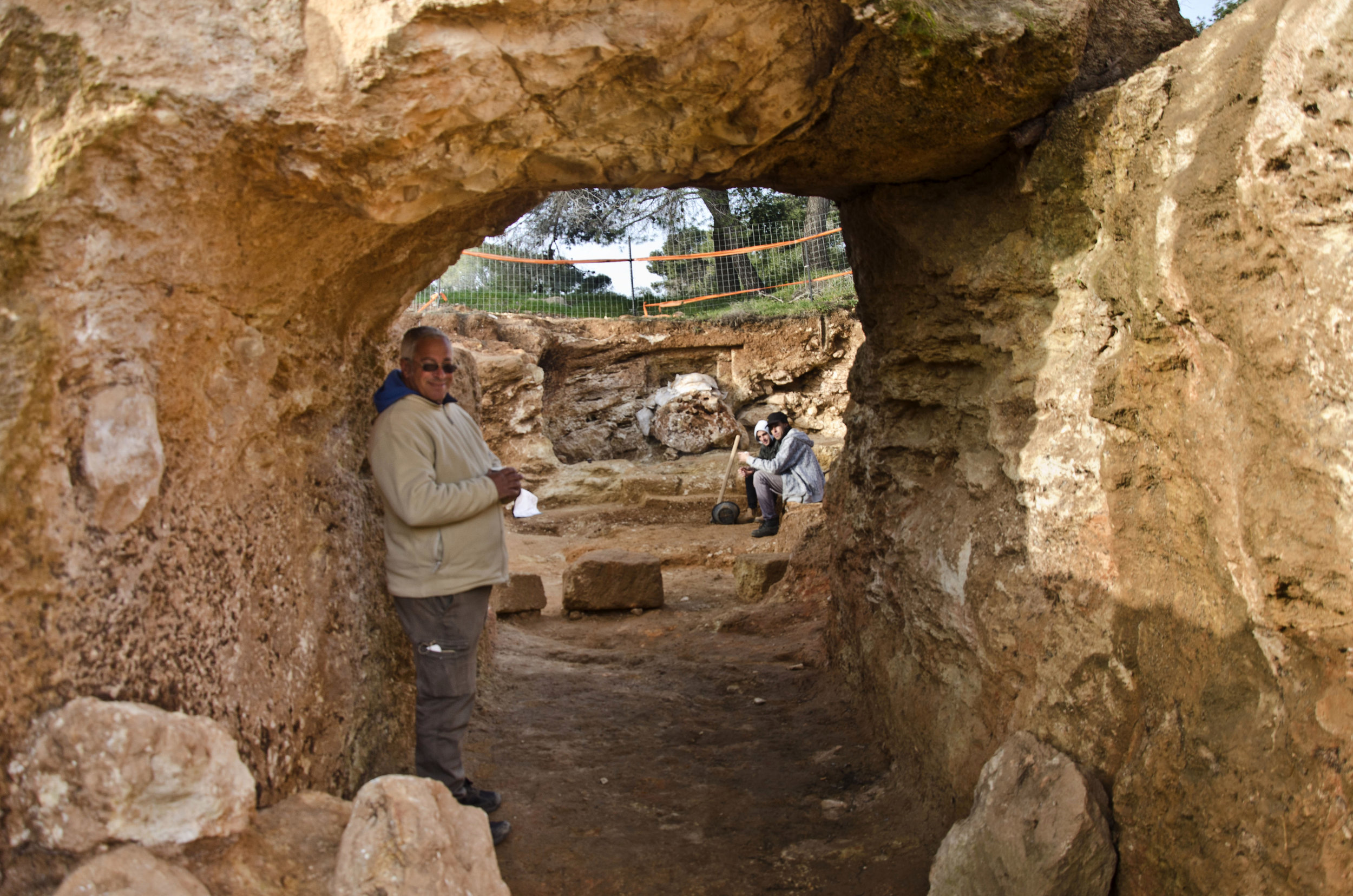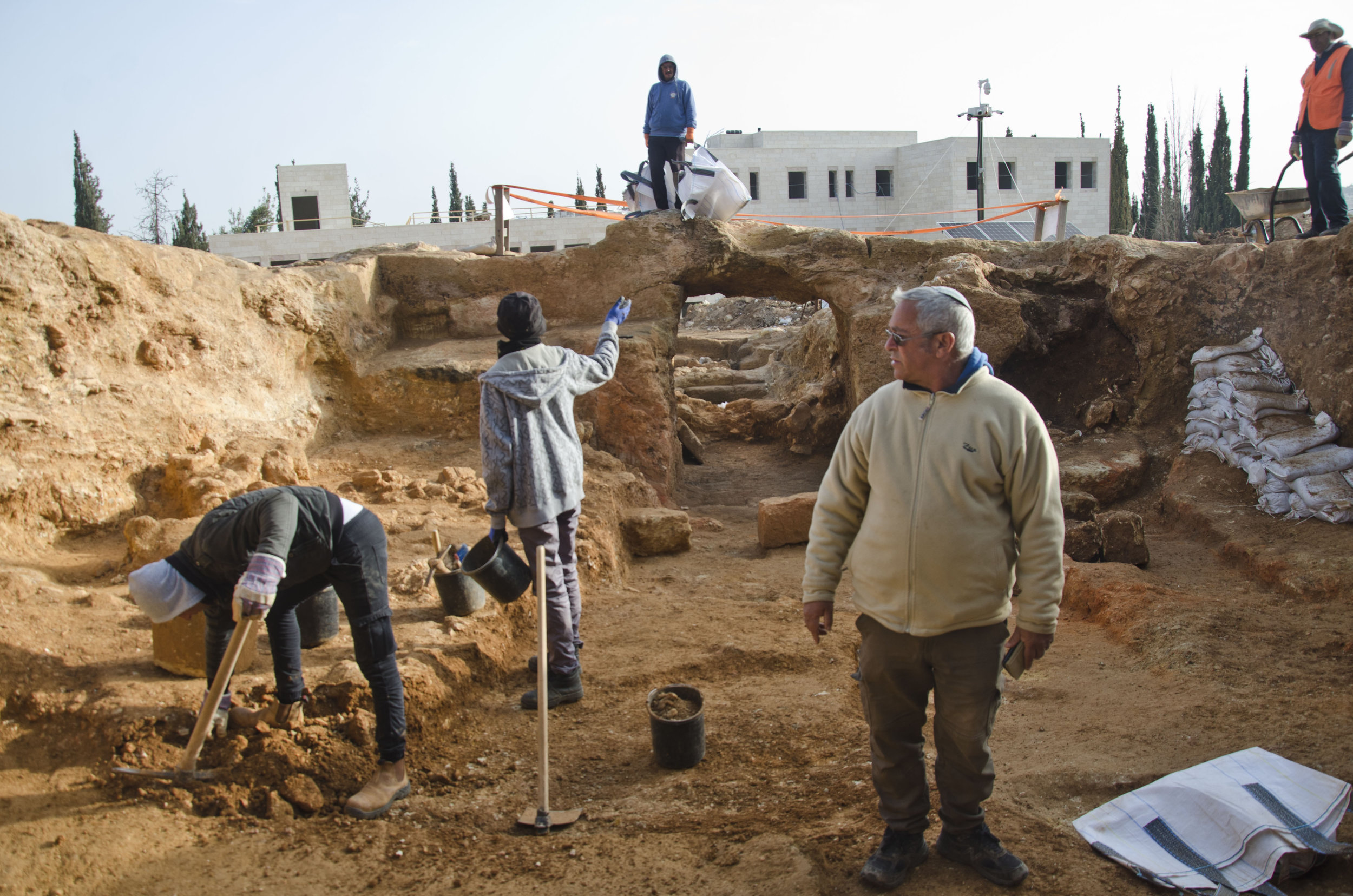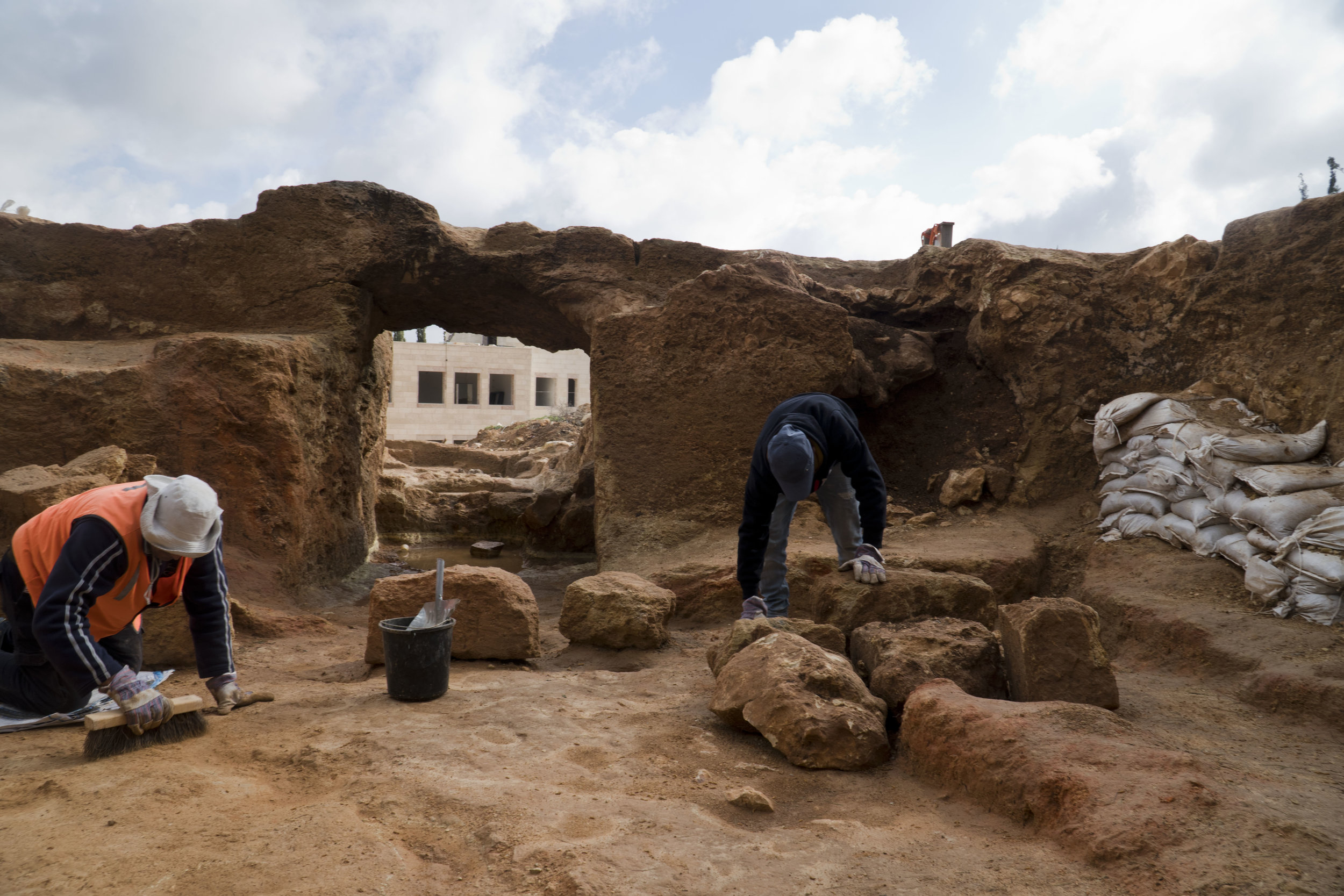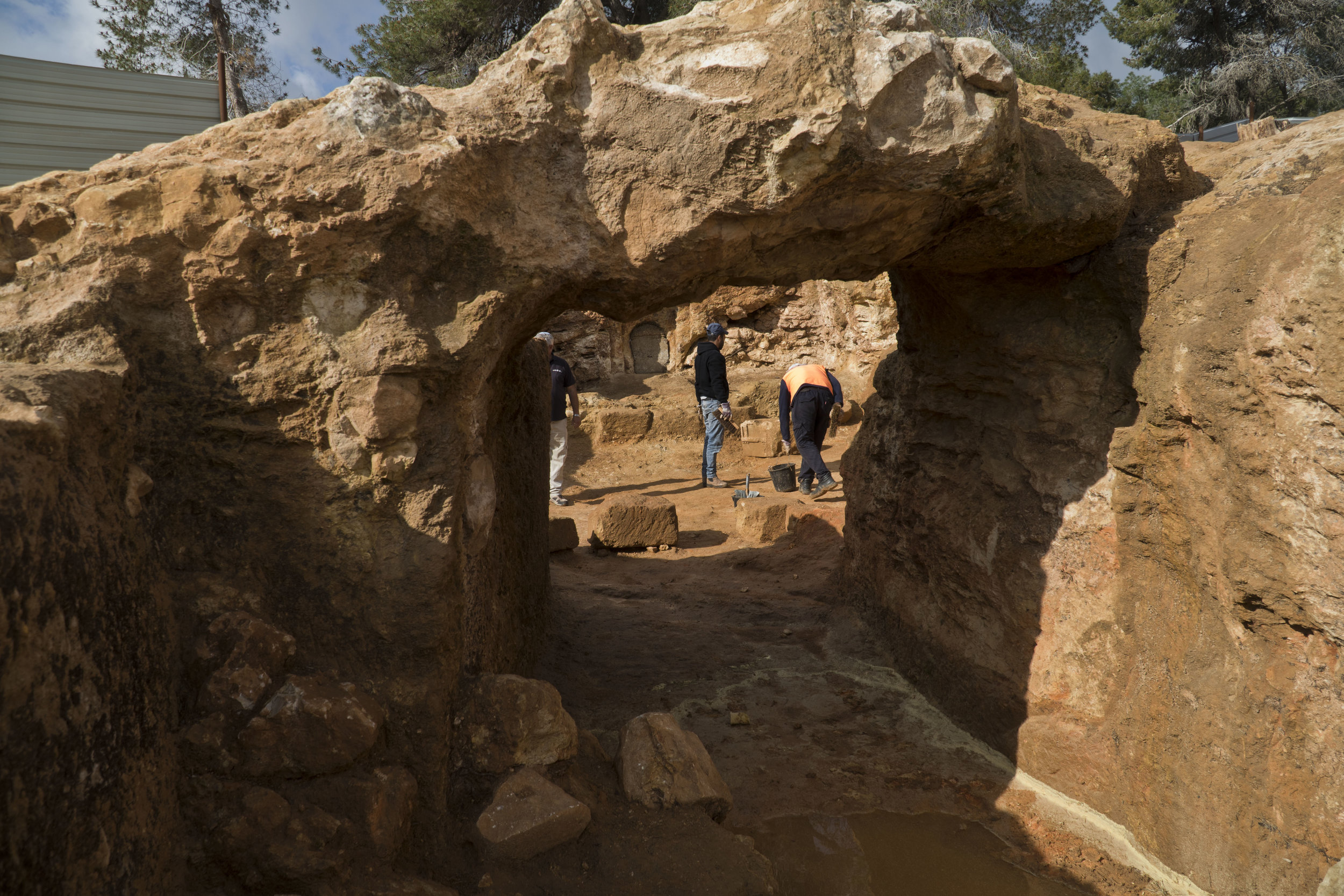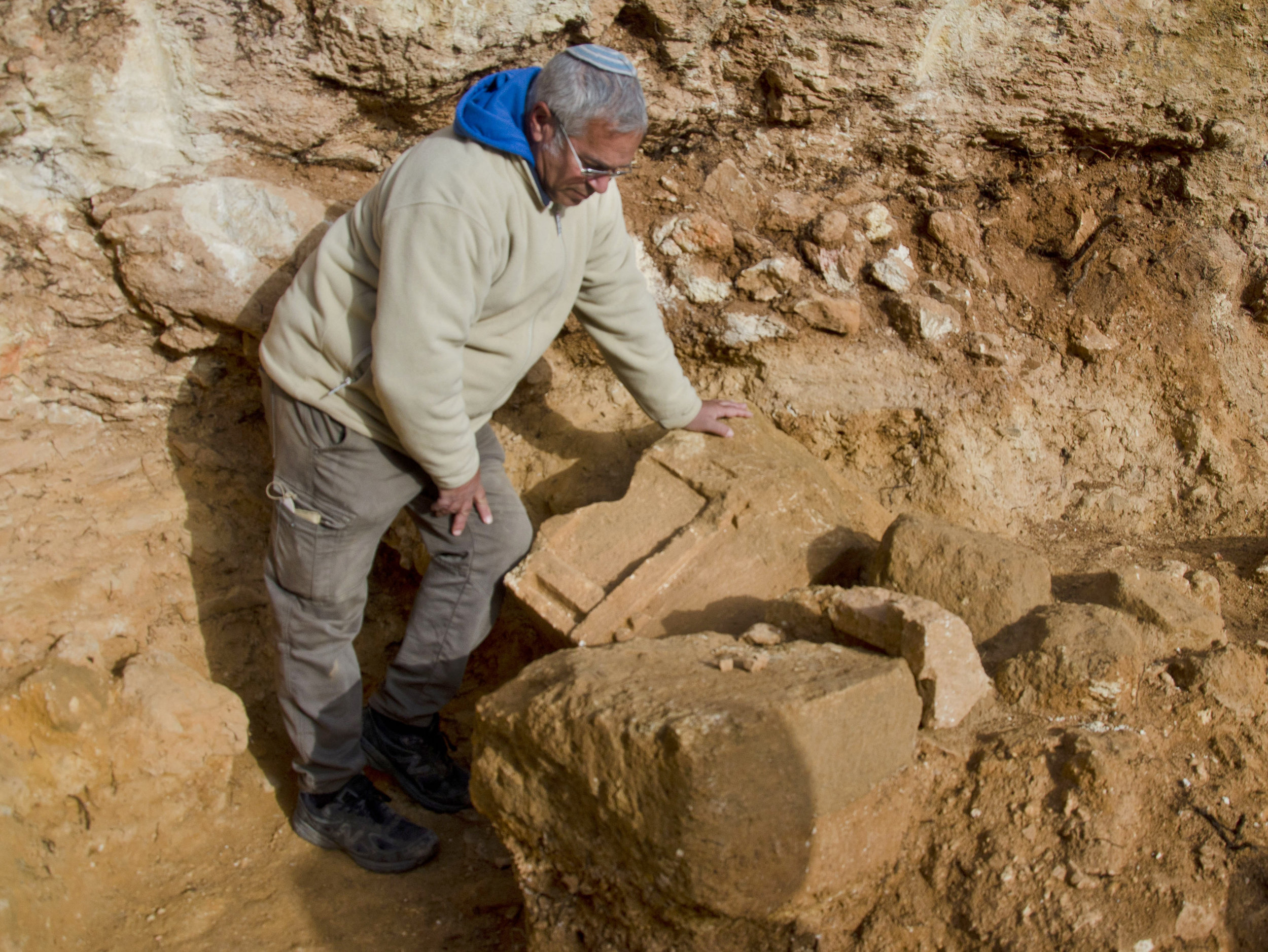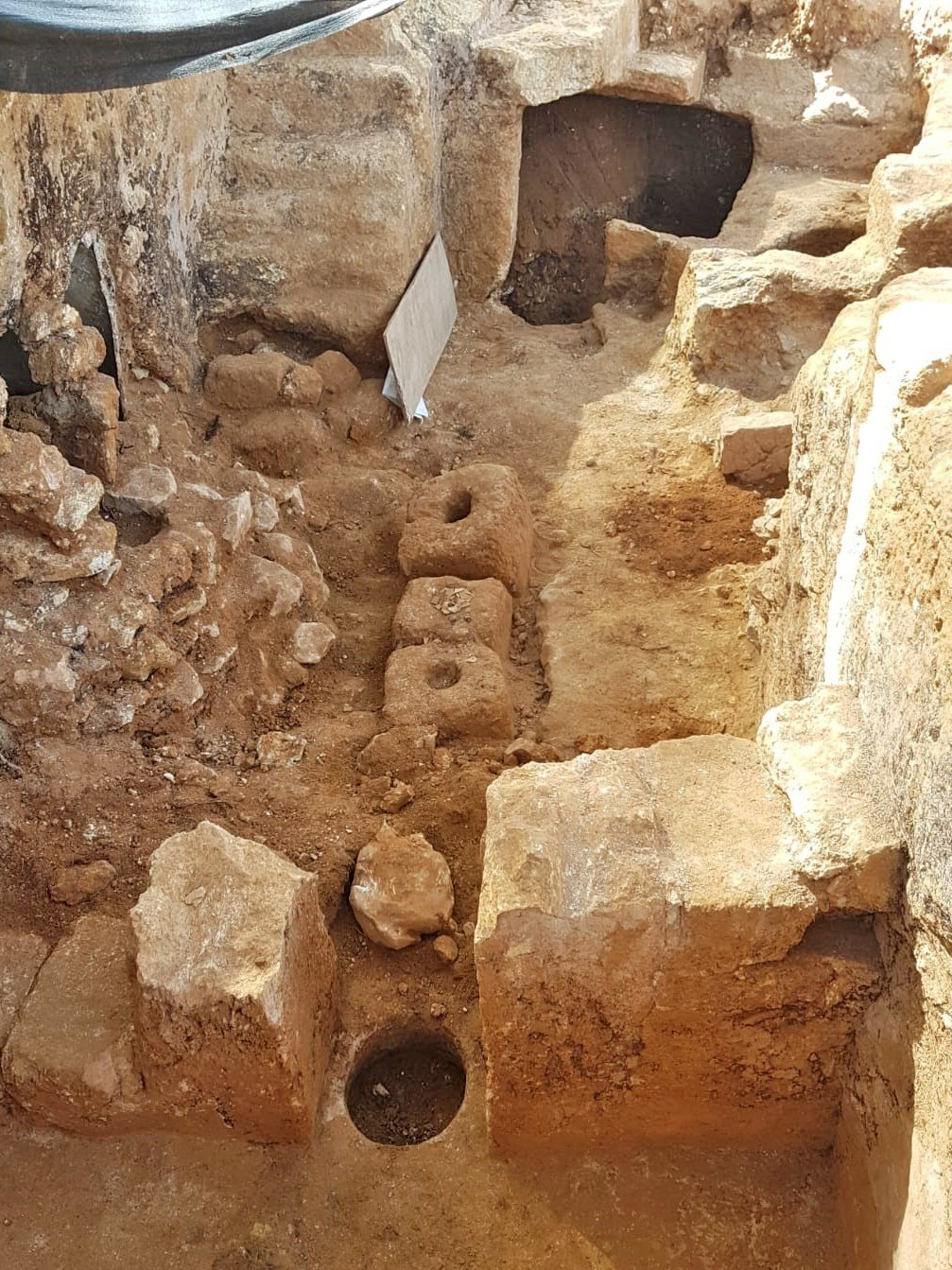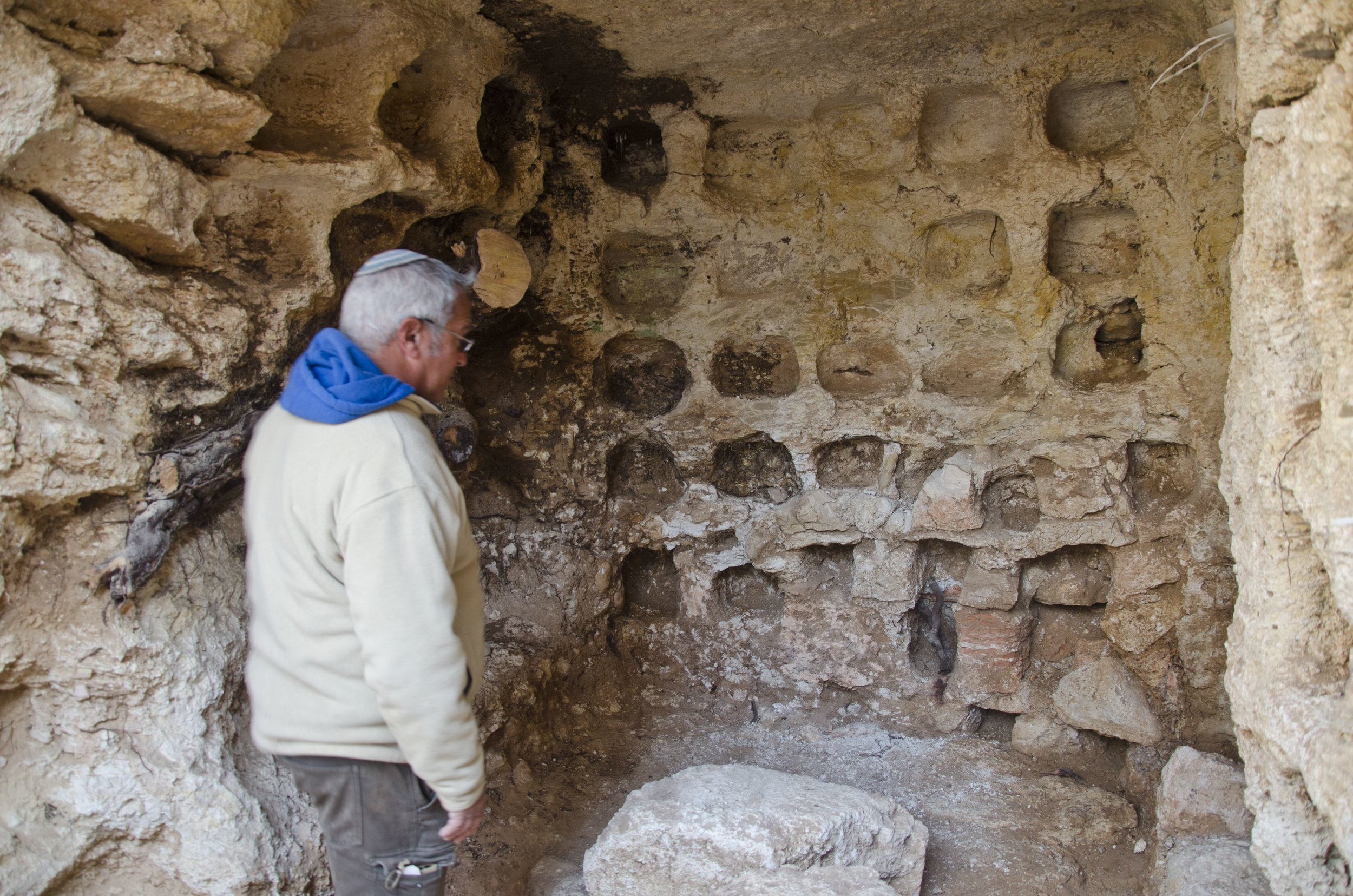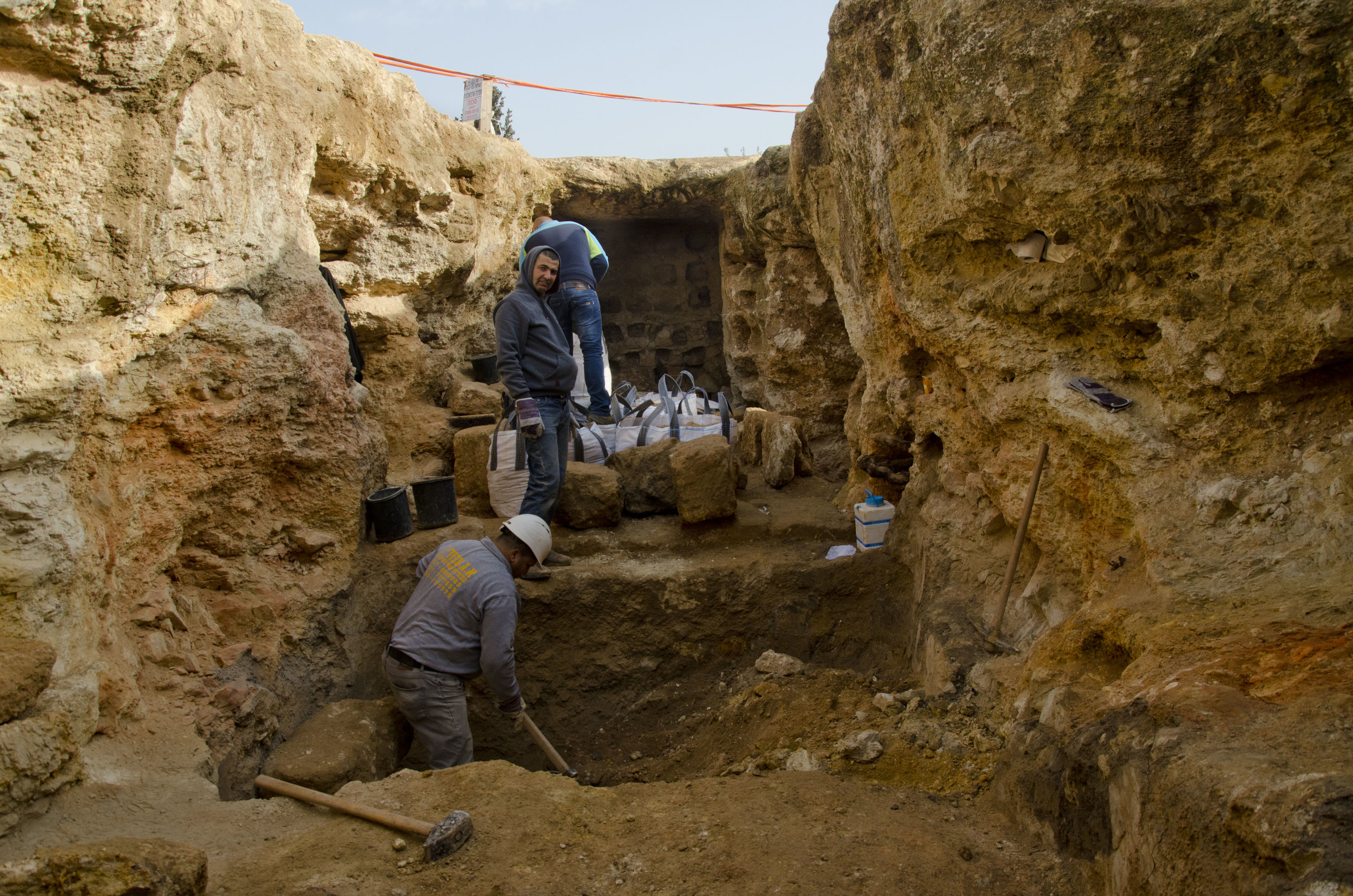Hasmonean Village and Elaborate Burial Estate discovered in Jerusalem
In Jerusalem’s Sharafat neighborhood the Israel Antiquities Authority is conducting a salvage excavation prior to the construction of an elementary school. They’ve uncovered a Jewish village from 2,000 years ago, dating to the Hasmonean period. Within this ancient domestic area the IAA has identified a water cistern, rock quarries and a large miqveh (ritual bath). The most significant discovery at the site is an elaborate burial estate chiseled into the bedrock.
The tomb’s courtyard was lined with a bench hewn from the bedrock, similar to tombs found in the Sanhedriah neighborhood. The bench was presumably used by those visiting the tomb to mourn the dead. Past the tomb’s façade, within the burial cave itself, a number of kochim (burial niches) were hewn into the bedrock of the walls. Out of respect for those buried within, and in accordance with the orthodox restrictions of disturbing burials, the IAA has sealed the tomb.
A number of large building stones and elaborate architectural elements common during the 2nd temple period were found in the earth above the tomb. Of particular interest is the Doric capital of a heart-shaped pillar. The architecture’s high-quality craftsmanship is very rare, according to the IAA’s press release, and is found mostly in monumental buildings or burial estates in the Jerusalem area, such as the burial estate of the priestly family of Benei Hazir in the Kidron valley.
“It seems that this burial estate served a wealthy or prominent family during the Hasmonean period. The estate was in use for a few generations as was common in that era.”
The tomb is associated with a Hasmonean period village to the south, only a small portion of which was exposed in the current excavations. Nonetheless, Archaeologists have been able to determine that the village was likely an agricultural one. Amongst the discoveries was a large winepress and an olive oil press, indicating the residents cultivated and processed grapes and olives in the Jerusalem hill country.
Also of interest was the excavation of a columbarium, or dovecote, for the breeding of doves. Doves were an important commodity during the Second Temple period. They were valued for their eggs and meat, and even their droppings were useful for fertilizing agricultural fields. In addition, doves were an important part of sacrificial worship at Jerusalem’s temple. Doves were sacrificed for cleansing from a disease (Lev. 14:22-23) after childbirth (Lev. 12:7-8; Luke 22-24; ) and as a sin offering (Lev. 5:7). According to Mathew 21:12, doves were even being sold within the temple, presumably for the convenience of those coming to make sacrifices. The columbarium at Sharafat joins a number of others found in the Jerusalem area.
An aerial Movie Clip showing the site of the archaeological excavation in Sharafat. Photography: Shai Halevi, IAA
The excavation at Sharafat is being carried out by the IAA and is funded by the Moriah Jerusalem development corporation on behalf of the Jerusalem municipality.
Abby VanderHart, FIAA Contributor

